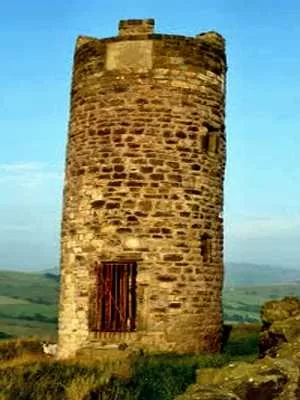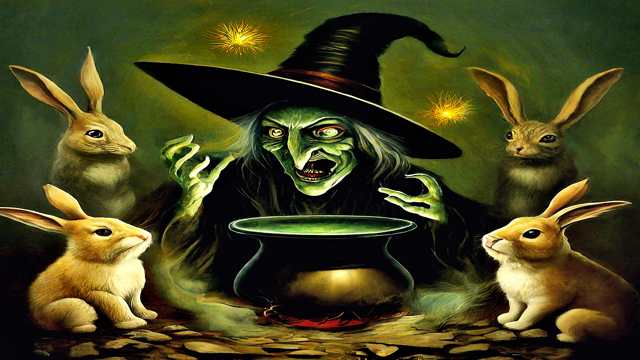In the early 17th century, the atmosphere in Lancashire was charged with fear and suspicion, particularly following the notorious Pendle witch trials. You might think that the legal turmoil would encourage people to keep a low profile, but the opposite occurred.
News quickly reached Roger Nowell, Justice of the Peace at Read Hall, that a meeting of witches had taken place at Malkin Tower, located on the slopes of Pendle Hill. This revelation came just four days after Nowell had committed four women from Pendle to the assizes at Lancaster Castle on charges of witchcraft.
Nowell, along with Nicholas Bannister, a magistrate from Altham, initiated another round of investigations. Their inquiries began with James Device, the brother of Alizon Device, who was described as a large, lumbering lad with mental disabilities. Under pressure from the magistrates, James confessed to stealing a wether (a castrated male sheep) from John Robinson of Barley. He admitted to taking it to Malkin Tower and slaughtering it for a meal on Good Friday, April 6, 1612.
When asked about the attendees of this meal, James listed several names, including his mother, Elizabeth Device, and various other women from the area. He claimed that they had gathered for three main reasons: to name Alizon Device’s familiar spirit, to kill Thomas Covell, the gaoler at Lancaster, and to assist Jennet Preston of Gisburn in killing Mr. Lister of Westby, as she lacked the power to do it herself.
Elizabeth Device corroborated her son’s account, adding names of two women from Burnley and Anne Cronkshaw of Marsden. She recalled discussions about “The Christening of the Spirit” and the plot to kill Mr. Lister, although she did not remember any talk of blowing up the castle or killing the gaoler. When questioned, Elizabeth’s nine-year-old daughter, Jennet, claimed that about twenty witches had been present, naming only a few.

The magistrates continued their investigation, pressing James and Elizabeth Device for more details. James recounted a peculiar incident where he was instructed to go to Communion on the Thursday before Easter but was told not to eat the bread. Instead, he was to give it to a “thing” he would encounter on his way home. When he did eat the host, a creature resembling a hare confronted him, but it vanished when he crossed himself. He later claimed that a black dog had approached him, asking for his soul, which he refused, stating it belonged to “Saviour Jesus Christ.” From that moment on, he identified himself as a witch with a spirit named “Dandy,” which he claimed had given him the power to kill two people.
Elizabeth Device also revealed that her spirit was called “Ball,” and she, along with Demdike and Alice Nutter, had created a clay figure of Henry Mitton, who subsequently died. She accused Jane Bulcock and her son John of bewitching a girl named Jenet Dean, causing her to lose her sanity, and confirmed their agreement to kill Mr. Lister for Jennet Preston. Additionally, she implicated Katherine Hewitt and Alice Gray in the death of a child named Ann Foulds.
As a result of these investigations, eight more individuals from the Pendle Forest were accused of witchcraft and sent for trial. Jennet Preston, who had been accused of witchcraft the previous year, was sent to York Assizes. On July 27, 1612, she was found guilty and hanged two days later at York Castle, despite not confessing to any wrongdoing.
The other seven accused included Elizabeth Device, her son James, Alice Nutter, and the mother-son duo Jane and John Bulcock, along with Katherine Hewitt and Alice Gray. The exact location of Malkin Tower, the home of Demdike and her family, remains uncertain. Some believe it may have been near Blacko, where a Victorian folly was built in 1890, while others speculate that a ruined cottage excavated near Black Moss reservoir in 2011 could be the remains of Malkin Tower.
The name “Malkin” itself has historical significance, appearing in Shakespeare’s Macbeth as the familiar of one of the witches, Gray-Malkin. The term “malkin” is an archaic word for a cat, a female servant, or a slattern, and it has been referenced in literature dating back to Chaucer.
The Pendle witch trials serve as a chilling reminder of the dangers of superstition and the societal pressures that can lead to the persecution of the innocent. The trials not only reflect the fears of the time but also highlight the tragic consequences of hysteria and the human tendency to scapegoat others in times of uncertainty. As we delve into this dark chapter of history, we are reminded of the importance of justice, reason, and compassion in the face of fear.

